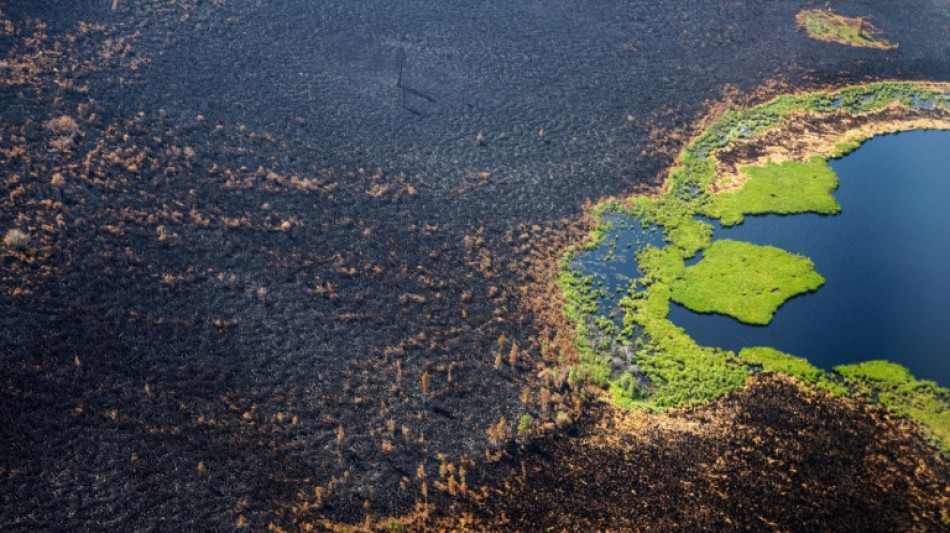
-
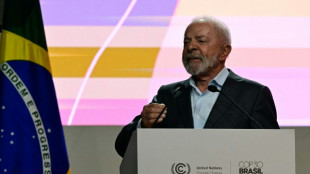 Brazil's Lula urges 'defeat' of climate deniers as COP30 opens
Brazil's Lula urges 'defeat' of climate deniers as COP30 opens
-
Strangled by jihadist blockade, Malians flee their desert town
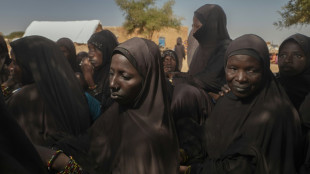
-
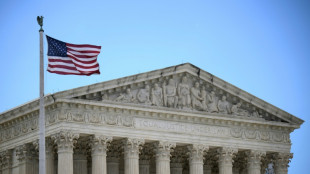 US Supreme Court declines to hear case challenging same-sex marriage
US Supreme Court declines to hear case challenging same-sex marriage
-
'Fired-up' Fritz sees off Musetti in ATP Finals

-
 Injured Courtois set to miss Belgium World Cup qualifiers
Injured Courtois set to miss Belgium World Cup qualifiers
-
Bulatov, pillar of Russian contemporary art scene, dies at 92
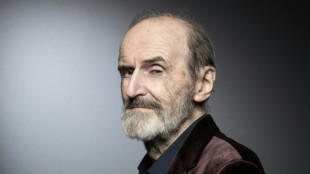
-
 Fritz sees off Musetti in ATP Finals
Fritz sees off Musetti in ATP Finals
-
US strikes on alleged drug boats kill six more people
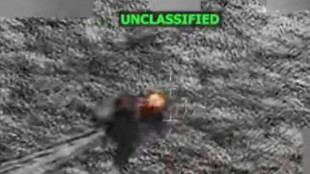
-
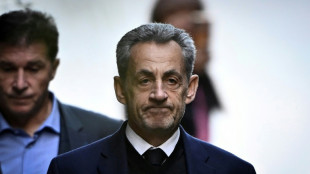 Sarkozy released from jail 'nightmare' pending appeal trial
Sarkozy released from jail 'nightmare' pending appeal trial
-
COP30 has a mascot: the fiery-haired guardian of Brazil's forest
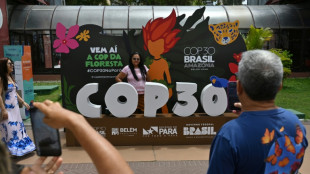
-
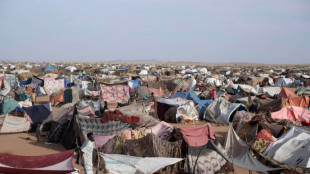 The Sudanese who told the world what happened in El-Fasher
The Sudanese who told the world what happened in El-Fasher
-
Three things we learned from the Sao Paulo Grand Prix

-
 ASC acquire majority share in Atletico Madrid
ASC acquire majority share in Atletico Madrid
-
Ferrari boss tells Hamilton, Leclerc to drive, not talk

-
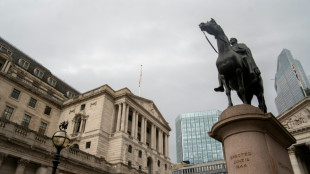 Bank of England seeks to 'build trust' in stablecoins
Bank of England seeks to 'build trust' in stablecoins
-
China suspends 'special port fees' on US vessels for one year

-
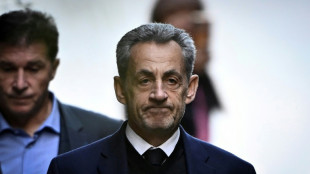 French court frees ex-president Sarkozy from jail pending appeal
French court frees ex-president Sarkozy from jail pending appeal
-
No link between paracetamol and autism, major review finds

-
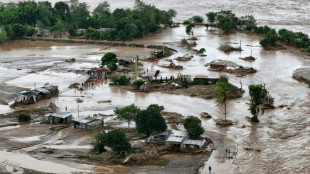 Typhoon Fung-wong floods Philippine towns, leaves 5 dead in its wake
Typhoon Fung-wong floods Philippine towns, leaves 5 dead in its wake
-
France's Sarkozy says prison a 'nightmare' as prosecutors seek his release
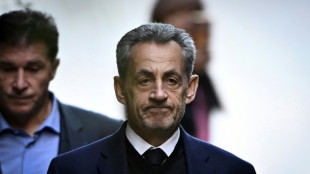
-
 Guinness maker Diageo picks new CEO after US tariffs cloud
Guinness maker Diageo picks new CEO after US tariffs cloud
-
China suspends 'special port fees' on US vessels

-
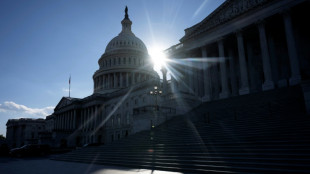 US senators take major step toward ending record shutdown
US senators take major step toward ending record shutdown
-
Typhoon Fung-wong leaves flooded Philippine towns in its wake
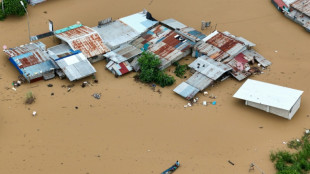
-
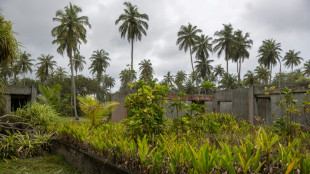 From Club Med to Beverly Hills: Assinie, the Ivorian Riviera
From Club Med to Beverly Hills: Assinie, the Ivorian Riviera
-
The 'ordinary' Arnie? Glen Powell reboots 'The Running Man'

-
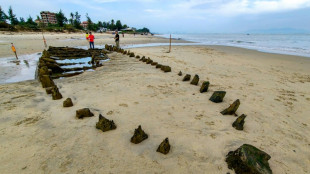 Typhoon exposes centuries-old shipwreck off Vietnam port
Typhoon exposes centuries-old shipwreck off Vietnam port
-
French court to decide if ex-president Sarkozy can leave jail
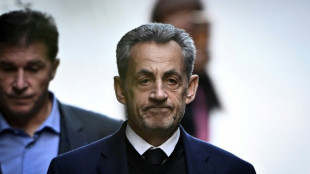
-
 China lifts sanctions on US units of South Korea ship giant Hanwha
China lifts sanctions on US units of South Korea ship giant Hanwha
-
Japan death row inmate's sister still fighting, even after release
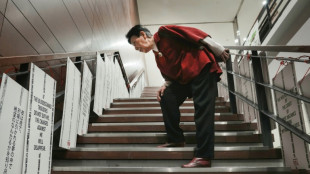
-
 Taylor sparks Colts to Berlin win as Pats streak hits seven
Taylor sparks Colts to Berlin win as Pats streak hits seven
-
Dreyer, Pellegrino lift San Diego to 4-0 MLS Cup playoff win over Portland

-
 Indonesia names late dictator Suharto a national hero
Indonesia names late dictator Suharto a national hero
-
Fourth New Zealand-West Indies T20 washed out
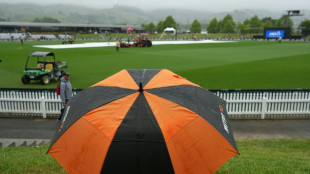
-
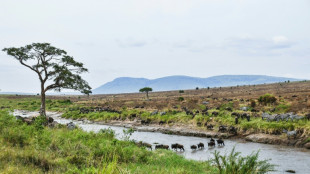 Tanzania Maasai fear VW 'greenwashing' carbon credit scheme
Tanzania Maasai fear VW 'greenwashing' carbon credit scheme
-
Chinese businesswoman faces jail after huge UK crypto seizure

-
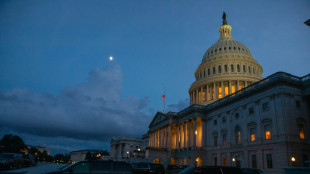 Markets boosted by hopes for deal to end US shutdown
Markets boosted by hopes for deal to end US shutdown
-
Amazon poised to host toughest climate talks in years

-
 Ex-jihadist Syrian president due at White House for landmark talks
Ex-jihadist Syrian president due at White House for landmark talks
-
Saudi belly dancers break taboos behind closed doors

-
 The AI revolution has a power problem
The AI revolution has a power problem
-
Big lips and botox: In Trump's world, fashion and makeup get political

-
 NBA champion Thunder rally to down Grizzlies
NBA champion Thunder rally to down Grizzlies
-
US senators reach deal that could end record shutdown
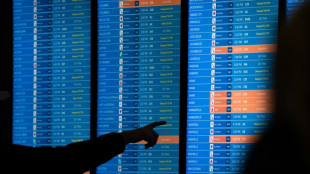
-
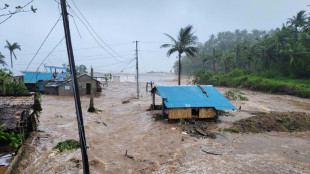 Weakening Typhoon Fung-wong exits Philippines after displacing 1.4 million
Weakening Typhoon Fung-wong exits Philippines after displacing 1.4 million
-
Lenny Wilkens, Basketball Hall of Famer as player and coach, dies

-
 Athos Therapeutics and Xeptiva Therapeutics Announce Partnership to Discover Vaccine Biomarkers with the AthosOmics.AI Platform
Athos Therapeutics and Xeptiva Therapeutics Announce Partnership to Discover Vaccine Biomarkers with the AthosOmics.AI Platform
-
LiberNovo Launches Black Friday Savings: Redefine Your Workspace for Health
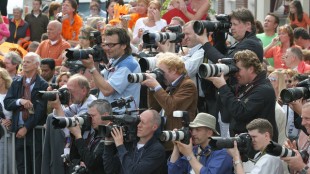
-
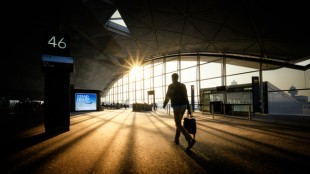 Montlick Partners with 11Alive for Veterans Day Telethon Benefiting Top Dogg K9 Foundation
Montlick Partners with 11Alive for Veterans Day Telethon Benefiting Top Dogg K9 Foundation
-
Envirotech Secures 80-Drone Deposits, Rapidly Expanding Drone Business
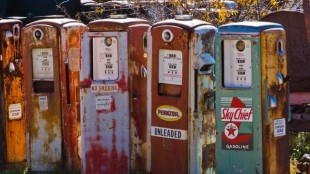
| RIO | 0.69% | 69.81 | $ | |
| CMSC | 0.27% | 23.915 | $ | |
| NGG | -0.91% | 77.052 | $ | |
| GSK | 0.33% | 46.785 | $ | |
| BTI | 0.32% | 54.765 | $ | |
| AZN | 1.92% | 86.235 | $ | |
| RYCEF | 0.13% | 14.82 | $ | |
| SCS | -0.06% | 15.75 | $ | |
| RBGPF | 0% | 76 | $ | |
| BCC | -1.25% | 69.77 | $ | |
| VOD | 0.47% | 11.635 | $ | |
| BP | 0.15% | 36.635 | $ | |
| CMSD | 0.21% | 24.15 | $ | |
| RELX | -1.04% | 41.835 | $ | |
| BCE | -1.35% | 22.88 | $ | |
| JRI | -0.36% | 13.691 | $ |

Arctic fires could release catastrophic amounts of C02: study
Global warming is responsible for bigger and bigger fires in Siberia, and in the decades ahead they could release huge amounts of carbon now trapped in the soil, says a report out Thursday.
Researchers fear a threshold might soon be crossed, beyond which small changes in temperature could lead to an exponential increase in area burned in that region.
In 2019 and 2020, fires in this remote part of the world destroyed a surface area equivalent to nearly half of that which burned in the previous 40 years, said this study, which was published in the journal Science.
These recent fires themselves have spewed some 150 million tonnes of carbon into the atmosphere, the scientists estimate, contributing to global warming in what researchers call a feedback loop.
The area above the Arctic circle heats up four times faster than the rest of the planet and "it is this climate amplification which causes abnormal fire activity," David Gaveau, one of the authors of this study, told AFP.
Researchers concentrated on an area five and a half times the size of France and with satellite pictures observed the surface area burned each year from 1982 to 2020.
In 2020, fire charred more than 2.5 million hectares (6.2 million acres) of land and released, in CO2 equivalent, as much as that emitted by Spain in one year, the scientists concluded.
That year, summer in Siberia was on average three times hotter than it was in 1980. The Russian city of Verkhoyansk hit 38 degrees Celsius in summer, a record for the Arctic.
The average air temperature in summer, from June to August, surpassed 10 degrees Celsius only four times in the period under study: in 2001, 2018, 2019 and 2020. These turned out to be the years with the most fires too.
The team fears that this threshold at 10 degrees Celsius will be a breaking point that is surpassed more and more often, said Gaveau.
"The system goes out of whack, and for a small increase beyond 10 degrees Celsius we suddenly see lots of fires," he said.
- Source of permafrost -
Arctic soils store huge amounts of organic carbon, much of it in peatlands. This is often frozen or marshy, but climate warming thaws and dries peatland soil, making large Arctic fires more likely.
Fire damages frozen soil called permafrost, which releases even more carbon. In some cases it has been trapped in ice for centuries or more.
"This means that carbon sinks are transformed into sources of carbon," Gaveau said.
"If there continue to be fires every year, the soil will be in worse and worse condition. So there will be more and more emissions from this soil, and this is what is really worrisome."
An elevated amount of CO2 was released in 2020 but things "could be even more catastrophic than that in the future," said Gaveau, whose company, TheTreeMap, studies deforestation and forest fires.
Higher temperatures have a variety of effects: more water vapor in the atmosphere, which causes more storms and thus more fire-sparking lightning. And vegetation grows more, providing more fuel for fire, but it also breathes more, which dries things out.
- Different scenarios -
Looking ahead to the future, the study analyzed two possible scenarios.
In the first one, nothing is done to fight climate change and temperatures keep rising steadily. In this case fires of the same gravity as in 2020 may occur every year.
In the second scenario, concentrations of greenhouse gases stabilize and temperatures level out by the second half of this century. In this case severe fires like those of 2020 would break out on average every 10 years, said Adria Descals Ferrando, the main author of the study.
Either way "summers with fires like those of 2020 are going to be more and more frequent starting in 2050 and beyond," said Gaveau.
L.Miller--AMWN